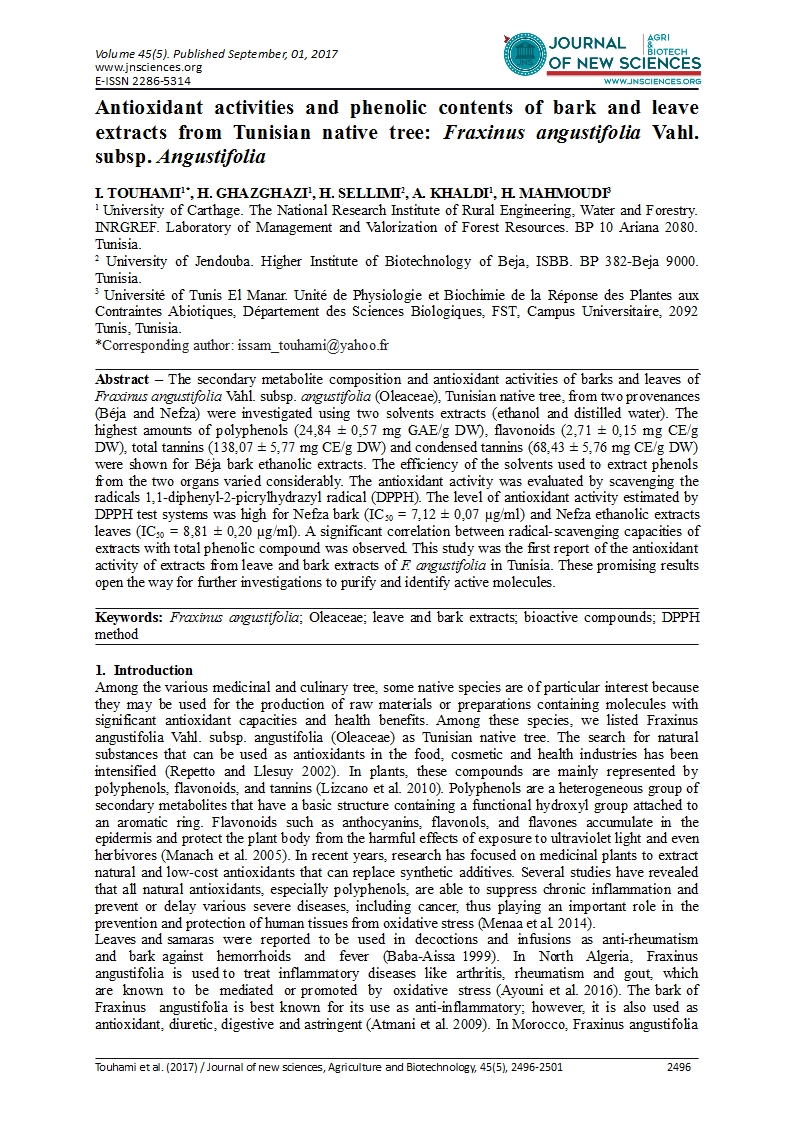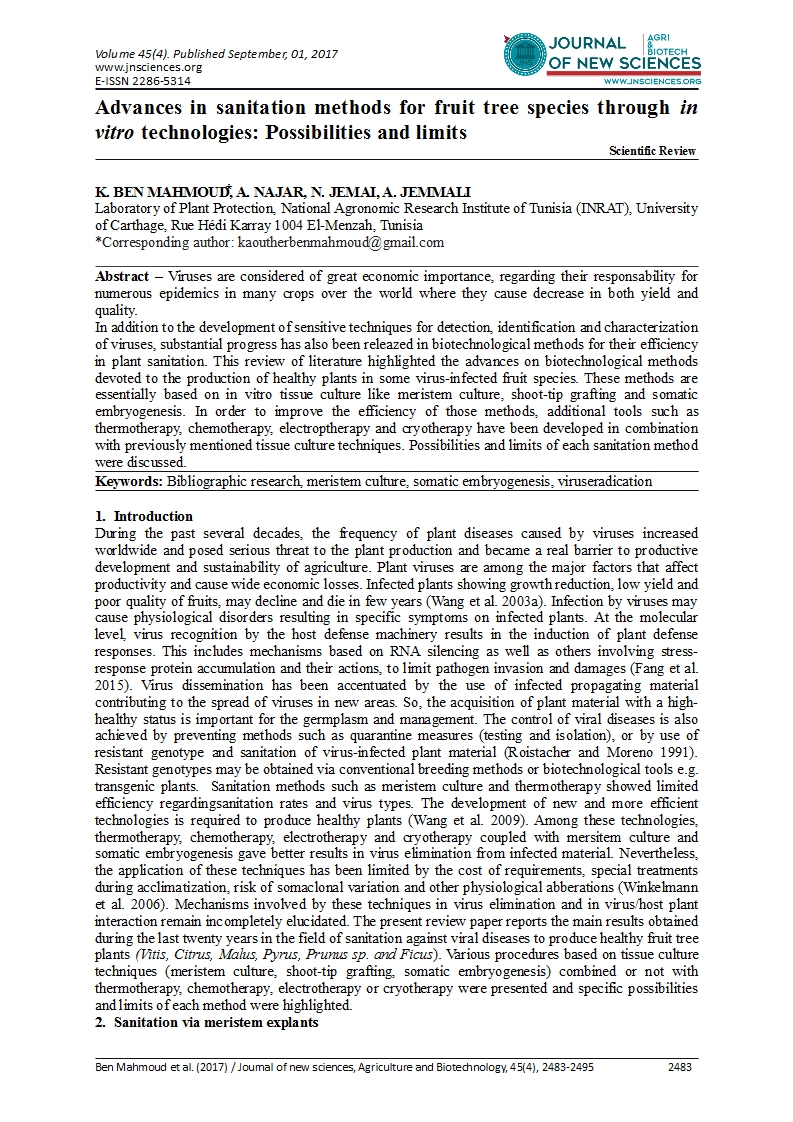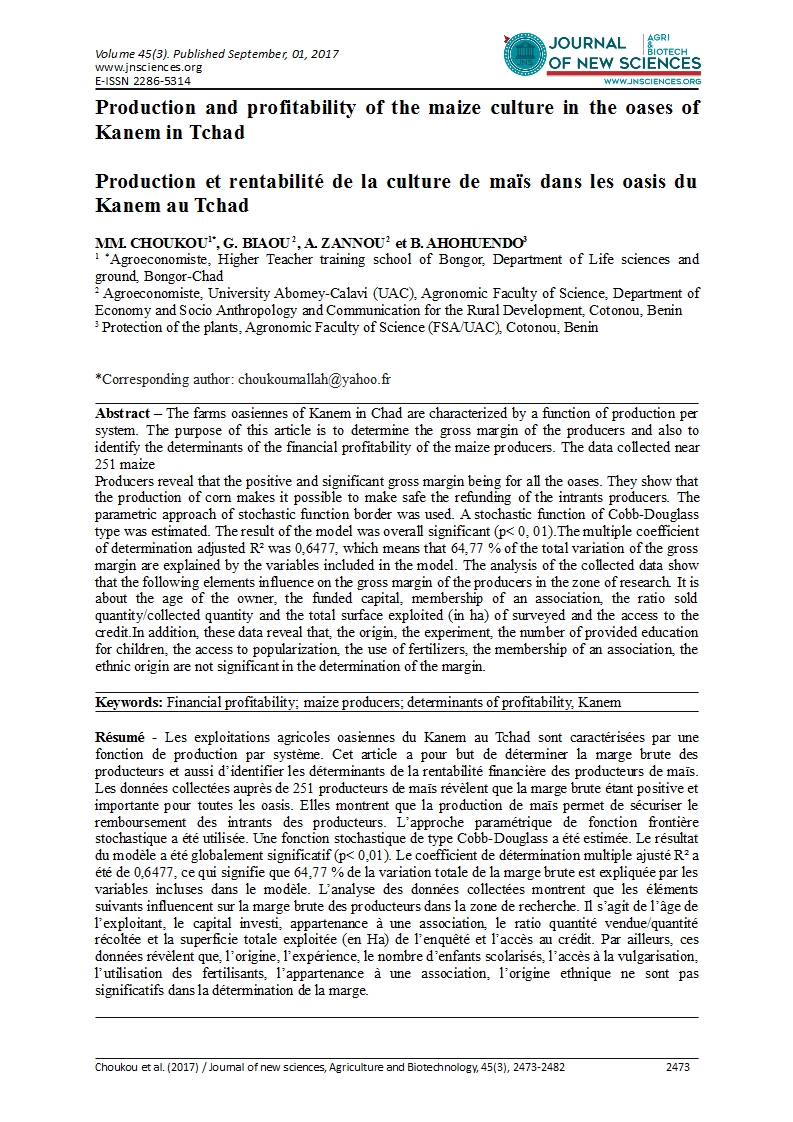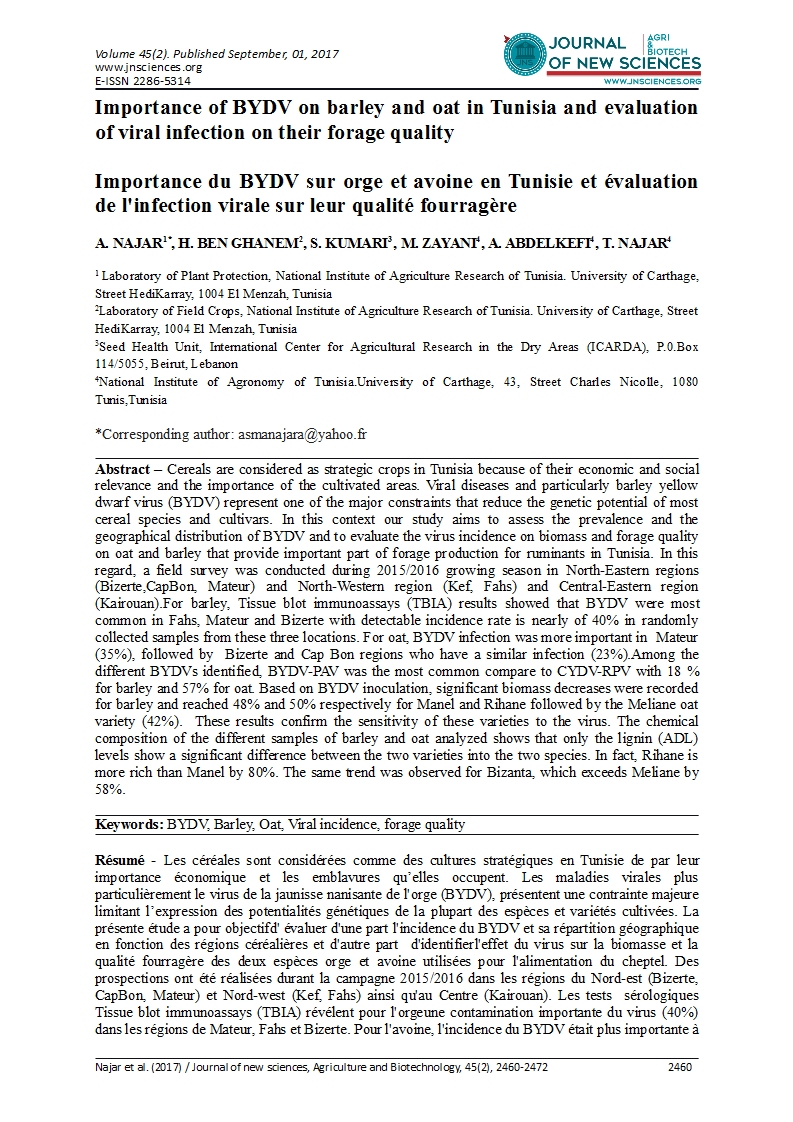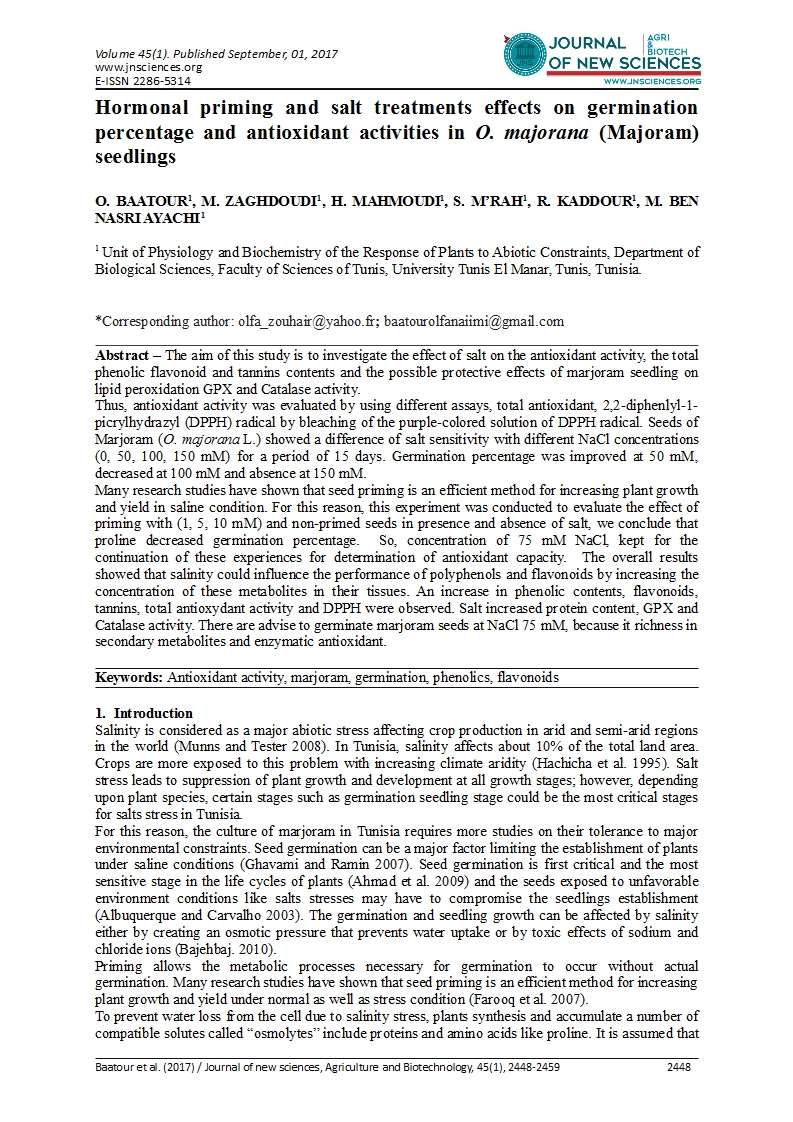Importance du BYDV sur orge et avoine en Tunisie et évaluation de l'infection virale sur leur qualité fourragère
A. NAJAR1*,
H. BEN GHANEM2,
S. KUMARI3,
M. ZAYANI4,
A. ABDELKEFI4,
T. NAJAR4
1 Laboratory of Plant Protection, National Institute of Agriculture Research of Tunisia. University of Carthage, Street HediKarray, 1004 El Menzah, Tunisia
2 Laboratory of Field Crops, National Institute of Agriculture Research of Tunisia. University of Carthage, Street Hedi Karray, 1004 El Menzah, Tunisia
3 Seed Health Unit, International Center for Agricultural Research in the Dry Areas (ICARDA), P.0.Box 114/5055, Beirut, Lebanon
4 National Institute of Agronomy of Tunisia.University of Carthage, 43, Street Charles Nicolle, 1080 Tunis,Tunisia
Abstract – Cereals are considered as strategic crops in Tunisia because of their economic and social relevance and the importance of the cultivated areas. Viral diseases and particularly barley yellow dwarf virus (BYDV) represent one of the major constraints that reduce the genetic potential of most cereal species and cultivars. In this context our study aims to assess the prevalence and the geographical distribution of BYDV and to evaluate the virus incidence on biomass and forage quality on oat and barley that provide important part of forage production for ruminants in Tunisia. In this regard, a field survey was conducted during 2015/2016 growing season in North-Eastern regions (Bizerte,CapBon, Mateur) and North-Western region (Kef, Fahs) and Central-Eastern region (Kairouan).For barley, Tissue blot immunoassays (TBIA) results showed that BYDV were most common in Fahs, Mateur and Bizerte with detectable incidence rate is nearly of 40% in randomly collected samples from these three locations. For oat, BYDV infection was more important in Mateur (35%), followed by Bizerte and Cap Bon regions who have a similar infection (23%).Among the different BYDVs identified, BYDV-PAV was the most common compare to CYDV-RPV with 18 % for barley and 57% for oat. Based on BYDV inoculation, significant biomass decreases were recorded for barley and reached 48% and 50% respectively for Manel and Rihane followed by the Meliane oat variety (42%). These results confirm the sensitivity of these varieties to the virus. The chemical composition of the different samples of barley and oat analyzed shows that only the lignin (ADL) levels show a significant difference between the two varieties into the two species. In fact, Rihane is more rich than Manel by 80%. The same trend was observed for Bizanta, which exceeds Meliane by 58%.
Keywords: BYDV, Barley, Oat, Viral incidence, forage quality
Résumé - Les céréales sont considérées comme des cultures stratégiques en Tunisie de par leur importance économique et les emblavures qu’elles occupent. Les maladies virales plus particulièrement le virus de la jaunisse nanisante de l'orge (BYDV), présentent une contrainte majeure limitant l’expression des potentialités génétiques de la plupart des espèces et variétés cultivées. La présente étude a pour objectifd' évaluer d'une part l'incidence du BYDV et sa répartition géographique en fonction des régions céréalières et d'autre part d'identifierl'effet du virus sur la biomasse et la qualité fourragère des deux espèces orge et avoine utilisées pour l'alimentation du cheptel. Des prospections ont été réalisées durant la campagne 2015/2016 dans les régions du Nord-est (Bizerte, CapBon, Mateur) et Nord-west (Kef, Fahs) ainsi qu'au Centre (Kairouan). Les tests sérologiques Tissue blot immunoassays (TBIA) révélent pour l'orgeune contamination importante du virus (40%) dans les régions de Mateur, Fahs et Bizerte. Pour l'avoine, l'incidence du BYDV était plus importante à Mateur (35%) suivie des régions de Bizerte et Cap bon avec un taux d'infection similaire (23%).Des analyses sérologiques plus spécifiques ont mis en évidence la prépondérance du virus BYDV-PAV par comparaison au CYDV-RPV avec des taux de 18% pour l'orge et 57% pour l'avoine. Sous l’effet d'une inoculation par le BYDV, des diminutions importantes de la bioamasse a été enregistrée pour l'orge et a atteint 48% et 50% respectivement pour Manel et Rihane suivi de la variété d'avoine Meliane (42%) stipulant une sensibilité de ces variétés au virus. La composition chimique des différents échantillons d’orge et d’avoine analysés montre que seules les teneurs en lignine (ADL) présentent une différence significative entre les deux variétés au sein des deux espèces. En effet Rihane est plus riche en ADL que Manel de 80%. Il en est de même pour Bizanta qui dépasse Meliane de 58%.
Mots clés : Allium, Polyphénols, GCMS, activité antioxydante, DPPH, infusion, décoction.
Read more
